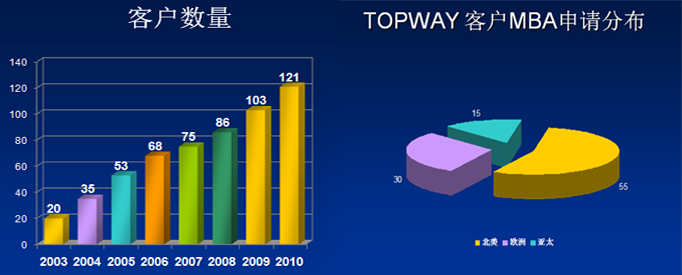|
 
- 精华
- 0
- 积分
- 6750
- 经验
- 6750 点
- 威望
- 674 点
- 金钱
- 674 ¥
- 魅力
- 674
|
第三、四题Self-Assessment Checklist:
1. I noted the main points of the reading passage.
2. I noted the main points of the listening passage.
3. I read the question carefully.
4. I used careful planning to outline my response.
5. I began with an overall topic statement.
6. I used strong supporting ideas.
7. I used transitions to connect the supporting ideas.
Question 5 Practicum for L-S Integrated Task
In question 5, you are asked to paraphrase the man/woman’s problem
and then retell the solutions that the woman/man comes up with. And
for this time, you should make a choice between the two.
这道是Problem and Solution(P&S)题。一般是关于campus-related situation,两个人讨论a problem and two possible solutions. The problem一般是关于scheduling conflicts, unavoidable absences, unavailable resources, student elections, financial difficulties, and so forth. 题目要求是“briefly describe the problem that was discussed in the conversation and to state which of the two solutions you prefer, and finally to explain why you prefer that solution”,其中的reason可以是材料中提到的,也可以是自己的类似经历。听60-90秒,准备20秒,说60秒。
1、Problem往往不是单纯的,而是复杂矛盾的,分几个回合说完。
2、Solutions针对Problem不同层面提出,注意提炼中心句。关切性的话可以略去。
3、问题不用听!每次都一样!省下10-15秒整理笔记。
4、答题时不要忘记给出自己的Solutions,想不出来就选择一个S提出的方案或把S提出的各种办法按照轻重缓急排序,形式上不可缺少!
模版:
In the conversation, the man/women has a problem with his/herschedue/report/essay /study(听得时候判断到底是哪方面的问题)
He or she couldn’t get/check out/afford ***(问题具体化)
He/she needs to***
The woman/man/professor/officer gives him/her twosolutions/options
(基本上是2个solution)The firstsolution/option is(概括,不用具体化)
Another suggestion the professor/woman gives is(概括,不用具体化)
And I think the second choice is preferable for the following reasons:
(自己的建议)First,the woman may confront the same problem in the future, itis better for her to handle it now and gain some helpful experiencesAlso,I have once faced thesame situation as the woman does, and I***
这两个理由比较容易套,背熟就好了
第5题很简单,背熟以上模版,考试的时候套就可以了。
Task 5 CAMPUS
1.首先一个人会描写一个与校园生活有关的问题或冲突(主要是时间,安排)
2.然后另一个人会对问题或矛盾提出2个解决方案。以及相关的原因及利弊。
3.听力时要注意:对话中描述的问题/冲突是什么?如果解决问题(2个解决方案)?你觉得哪种方案好,为什么?
PROBLEM+2 SOLUTIONS+PREFERENCE+WHY
不需要太多细节。
4.注意1+2和相关句型:
A.提出问题(交作业,考试,还书,参加活动,打工,上课,听讲座等)
a) 单纯提出问题,比如说忘记带东西了,电脑坏了,找人借钱等。
b) 矛盾冲突(特别是时间上的冲突):出现在对话的开始部分。不必理会一些打招呼的寒暄的话,重点放在听矛盾是什么,只要记下关键的名词或动词,及名词性短语即可。
B.建议的句型:
YOU CAN, YOU SHOULD, YOU‘D RATHER, WHY NOT, WHO DON‘T YOU
THERE IS A POSSIBILITY
IS IT POSSIBLE。。。?
HAVE YOU EVER THOUGH ABOUT。。。?
ANOTHER THING YOU CAN DO IS。。。
YOU NEED TO。。。
IF I WERE YOU, I‘D RATHER。。。
5.PATTERN:
1). The man/woman has a problem/situation, which is that….+but/however(如果有冲突的话)
2). The man/ woman gives two suggestion. Suggestion one is……… suggestion two is…….
3). If I were the man/woman, I would follow the first/second suggestion.
或者是 In my opinion/as far as I’m concerned, the best thing for the man/woman to do is….
4). Because I think …..
每一个省略为2句话。
Useful tips:
?The OPTIMAL time allotment is: 10 seconds for the problem, 17 seconds for each solution, and 10 seconds for your choice and why,and about 6 seconds pausing throughout your answer.
?DO REMEMBER that you HAVE TO state your opinion in your answer.BUT do not spend too much time on that.
?Make your answer as SIMPLE as it can be, you really don’t have enough time to cover everything mentioned in the conversation.
?DO say “the man/woman offers her/him TWO(or THREE) solutions.”This is to ensure that you get all the solutions even if you can’t finish you answer in time, so the examiner will still give you a good score.
Your answer can go like this:“In this conversation, the man/woman is having a hard time dealing with the problem that … . And the woman/man offers him/ her two possible solutions. One is … . The other is … . And if it were my choice, I would choose the former/latter one, because ... .”
In the conversation, the man/woman has a problem with his/her schedule/report/essay /study(听得时候判断到底是哪方面的问题)
He or she couldn’t get/check out/afford ***(问题具体化)
He/she needs to***So, the woman/man/professor/officer offers him/her two solutions/options
重要!
The first solution/option is(概括,不用具体化)
Another suggestion the professor/woman gives is(概括,不用具体化)
And from my point of view/As for me, the second choice is preferable for the following reasons/the best way to solve this problem is :
(自己的建议)First, the woman may confront the same problem in the future, it’s better for her to handle it now and gain some helpful experiences. Also, I have once faced the same situation as the woman does, and I ***(这么干的), it works well pretty well for me.
The woman/man is facing the problem that….. So the man/woman offers him/her two solutions. One is…….Another is…. Well, to me, I prefer the first/second one. because (理由,常直接来自听力).....,(如果有时间),I was once faced with the similar trouble; I chose to(说支持的具体选择) and everything turned out to be all right.(记主要观点,要求发表自己观点)
Question 6 L-S Integrated Task
In question 6, the speaker usually gives two examples to explain a
theory or a phenomenon. So your main job is to find what the theory or
the phenomenon is, and jot down the examples that the professor
presents in the lecture.
这道题是Summary题。听一段学术方面(life science, social science, physical science, and the humanities)的lecture,问题一般是“explain the main concept or issue of the lecture, using points and examples that were given in the lecture”。听60-90秒,准备20秒,说60秒。
1、捕捉每一层次中心句的能力非常重要。记录要简要清晰,便于复原。
2、文章结束,可以考问题整理笔记,问题本身具有纲要性,特别当听到数字时。
3、关键学术语汇的听辨和记录复述是答题的重要挑战。
这个题目非常讲究条理,基本上,先会总结下要讲的内容(也就是会中心句),然后分为几个层次讲,做笔记的时候要注意层次清楚。
In the lecture, theprofessor discusses/argues/demonstrates *** in several points/aspects
First, he says that
and he gives an example of
Second, he mentioned that
and he shows some data/researchs about
Finally, he discusses that |
|


